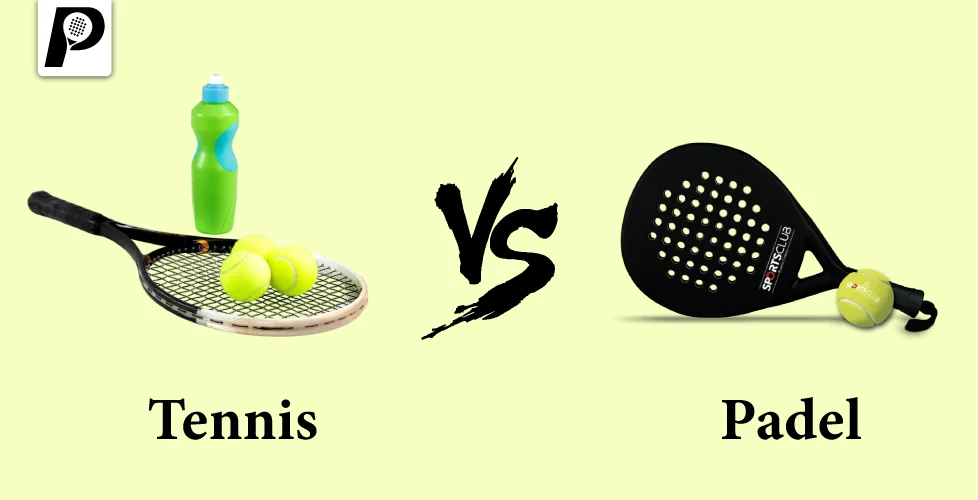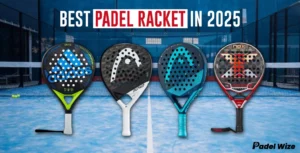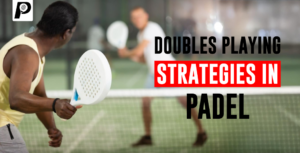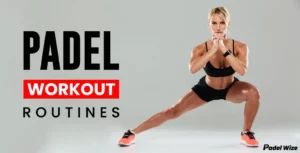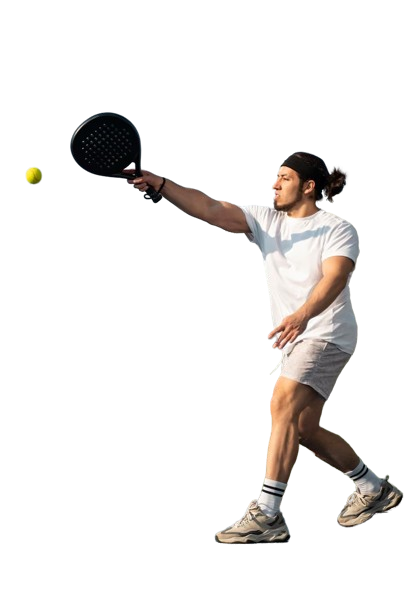The sports world has witnessed a surge in the popularity of padel, a fast-paced, dynamic game that’s often compared to tennis. While both sports share certain similarities, they are fundamentally different in terms of rules, gameplay, and equipment. In this comprehensive guide, we’ll break down the key differences between Tennis vs Padel, helping you understand which sport might suit your style and preferences.
Related: Mastering the Game at Your Padel Club: Tips and Techniques
What is Padel?
Padel is a racquet sport played on a smaller court surrounded by walls, incorporating elements of both tennis and squash. Originating in Mexico in the 1960s, padel has gained immense popularity in countries like Spain, Sweden, and Argentina. The game is always played in doubles, and its unique rules make it accessible and enjoyable for players of all skill levels.
To get started with padel, having the right gear is essential. Investing in quality equipment like Padel Rackets and Padel Balls can significantly enhance your gameplay experience.
Key Differences in Rules
The ket differences in rules of Tennis vs Padel are given below:
1. Court Dimensions
- Padel Court: A standard padel court measures 20 meters by 10 meters, enclosed by glass walls and metal fencing. The walls are integral to the gameplay, as the ball can bounce off them during rallies.
- Tennis Court: A standard tennis court measures 23.77 meters by 8.23 meters for singles matches and 23.77 meters by 10.97 meters for doubles. There are no walls involved in tennis, and the game relies purely on the dimensions of the court.
2. Scoring System
Both padel and tennis use the same scoring system: love (0), 15, 30, 40, and advantage, with six games needed to win a set and two or three sets to win a match. However, padel matches often include tie-breakers to make games shorter and more dynamic.
3. Serving Rules
- Padel: Serves must be underhand and below waist height. The ball must bounce in the service box before the opponent returns it. Players are allowed two serves.
- Tennis: Serves are overhand, and players have two chances to serve the ball into the opponent’s service box without it touching the net.
4. Ball in Play
- Padel: The walls play a critical role. Players can use the walls to bounce the ball strategically, similar to squash. This adds a tactical dimension to the game, making positioning crucial.
- Tennis: The ball must stay within the court boundaries, and once it goes out of bounds, the point ends.
5. Doubles vs. Singles
- Padel: The game is exclusively played in doubles, with two players on each side.
- Tennis: Tennis can be played in both singles and doubles formats, giving it more variety in match styles.
Related: Top Strategies for Winning the Padel Smash Game
Gameplay Comparison
The Gameplay Comparison of Tennis vs Padel are given below:
1. Racket and Ball
- Padel Racket: Padel rackets are solid, perforated, and smaller than tennis rackets. They are designed for better control and easier handling. Check out these premium Padel Rackets to elevate your game.
- Tennis Racket: Tennis rackets have a larger frame and strings, allowing for more powerful shots.
For padel, using high-quality Grip and Overgrips is vital to maintain a firm hold during intense rallies.
The balls used in both sports look similar but differ slightly in pressure. Padel balls have less pressure, making them slower and easier to control. Consider these Padel Balls for consistent performance.
2. Pace of the Game
Padel is generally slower than tennis due to the smaller court size, less powerful rackets, and lower-pressure balls. However, the use of walls and the confined space can lead to intense, fast-paced rallies.
Tennis, on the other hand, emphasizes powerful serves, volleys, and long rallies across a larger playing area.
3. Skill Requirements
- Padel: Padel is beginner-friendly, requiring less physical strength and endurance. The game focuses more on strategy, positioning, and teamwork.
- Tennis: Tennis requires a higher level of physical fitness, as the larger court demands quick movement and powerful strokes.
Related: Padel Rules and Regulations: How to Play Like a Pro
Essential Accessories for Padel Players
To optimize your performance and comfort during matches, consider these must-have accessories:
1. Padel Bags
A high-quality padel bags is essential for keeping all your gear organized and protected. Look for a bag with:
- Multiple compartments: Separate sections for rackets, shoes, balls, and personal items.
- Durable materials: Ensure it can withstand frequent use and protect your gear from damage.
- Comfortable straps: Choose adjustable, padded straps for easy transportation.
Carrying an organized padel bag means you can focus entirely on your game without worrying about misplacing or damaging your equipment.
2. Padel Shoes
Proper footwear is critical for agility and comfort on the court. Padel shoes are specifically designed for the unique demands of the game:
- Enhanced grip: The soles are tailored for optimal traction on artificial turf or sand-covered surfaces.
- Lateral support: Padel involves rapid side-to-side movements, so shoes with strong lateral stability reduce the risk of injury.
- Cushioning: Extra padding absorbs impact, keeping your feet comfortable during long matches.
Investing in sport-specific shoes minimizes strain on your feet and ankles, allowing you to move confidently and react quickly.
3. Vibration Dampeners
Vibration dampeners are small but impactful tools that can improve your gameplay and protect your wrist:
- Minimized vibrations: They reduce the shock felt when the ball hits the racket, preventing strain on your wrist and arm muscles.
- Improved shot control: A stable racket allows for more precise and consistent strokes, especially during high-intensity rallies.
These accessories are particularly useful for players prone to wrist discomfort or for those looking to refine their control over powerful shots.
4. Wristbands and Headbands
Sweat can be a major distraction during long matches, and wristbands and headbands help keep you focused:
- Moisture absorption: They prevent sweat from dripping onto your hands or into your eyes, maintaining a firm grip on the racket and clear vision.
- Comfort and style: Available in various designs and colors, these accessories add a touch of personal style while enhancing practicality.
Staying dry during a match ensures you can perform at your best without interruptions.
5. Protective Racket Covers and Frame Protectors
Your protective racket covers is your most important tool, and keeping it in top condition is vital for consistent performance:
- Protective covers: These shield your racket from scratches, dirt, and moisture during transport and storage.
- Frame protectors: The frame protectors Applied directly to the racket, these guards protect against impacts with walls or floors, especially during fast-paced games.
Extending the lifespan of your racket saves money in the long run and ensures your equipment performs reliably every time you play.
Related: Padel Smash Game: Essential Equipment and Gear Guide
Accessibility and Popularity
The accessibility and popularity of Tennis vs Padel are given below:
1. Accessibility
Padel courts are smaller, making them more affordable to construct. The underhand serve also makes padel easier for beginners to pick up. Tennis, while widely accessible, often requires more practice to master due to the technicalities of strokes and serves.
2. Popularity
Tennis has a long-established global fanbase, with iconic tournaments like Wimbledon, the US Open, and the French Open. Padel, however, is rapidly growing in popularity, particularly in Europe and South America, where it has become a social sport enjoyed by people of all ages.
Which Sport Should You Choose?
Tennis vs Padel: Which sport should you choose? Both offer unique gameplay, rules, and challenges. Dive into their differences to find the one that suits you best!
- Choose Padel if you’re looking for a social, strategic game that’s easy to learn and less physically demanding.
- Choose Tennis if you enjoy a more intense workout, powerful strokes, and the challenge of mastering complex techniques.
Related: Gear Up for Success: A Guide to Padel Equipment
Conclusion
While padel and tennis share some common ground, they are distinct sports with unique rules and gameplay. Padel’s incorporation of walls and its emphasis on doubles play make it a more strategic and social sport. Tennis, with its focus on power and precision, offers a different kind of challenge.
Whether you prefer the fast-paced rallies of padel or the athleticism of tennis, both sports promise an exhilarating experience. Equip yourself with the right gear, such as Padel Rackets and Padel Balls, and get ready to enjoy the game of your choice. Why not try both and decide which one resonates with you the most?

